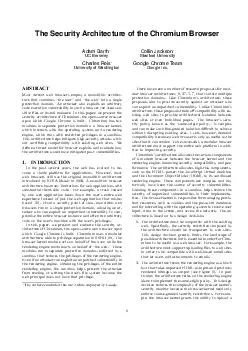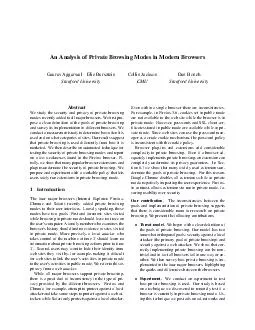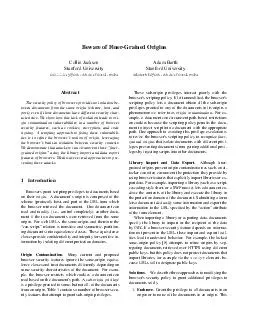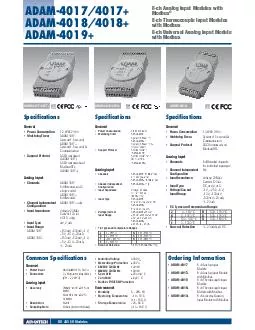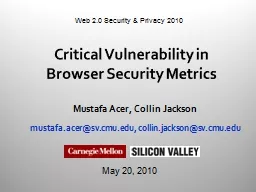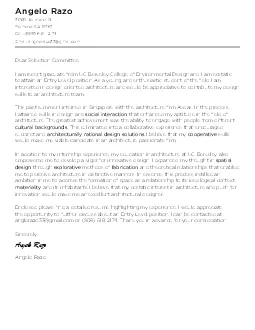PDF-The Security Architecture of the Chromium Browser Adam Barth UC Berkeley Collin Jackson
Author : jane-oiler | Published Date : 2015-02-27
ABSTRACT Most current web browsers employ a monolithic architec ture that combines the user and the web into a single protection domain An attacker who exploits
Presentation Embed Code
Download Presentation
Download Presentation The PPT/PDF document "The Security Architecture of the Chromiu..." is the property of its rightful owner. Permission is granted to download and print the materials on this website for personal, non-commercial use only, and to display it on your personal computer provided you do not modify the materials and that you retain all copyright notices contained in the materials. By downloading content from our website, you accept the terms of this agreement.
The Security Architecture of the Chromium Browser Adam Barth UC Berkeley Collin Jackson: Transcript
Download Rules Of Document
"The Security Architecture of the Chromium Browser Adam Barth UC Berkeley Collin Jackson"The content belongs to its owner. You may download and print it for personal use, without modification, and keep all copyright notices. By downloading, you agree to these terms.
Related Documents

